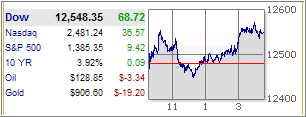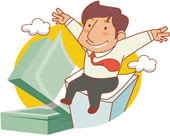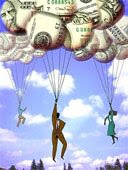 You constantly hear me harping on the essentials of trend tracking, such as keeping your losses small by using a clearly defined exit strategy, accepting whip-saws as a necessary part of investing, letting your profits run and many others.
You constantly hear me harping on the essentials of trend tracking, such as keeping your losses small by using a clearly defined exit strategy, accepting whip-saws as a necessary part of investing, letting your profits run and many others.
It appears that I am not the only one using these ideas. The WSJ posted a story titled “If It Feels Bad, It’s Probably A Good Trade,” which features hedge fund manager Lorenzo Di Mattia, and how he handles the emotional ups and downs and the frustrations of the market place.
Here are some snippets:
Emotions are contrarian indicators, says Lorenzo Di Mattia, manager of hedge fund Sibilla Global Fund.
“Actions that make us feel good are usually a lot less profitable than the ones that make us feel bad or stupid,” says Mr. Di Mattia, who manages about $400 million and trades stock index futures, currencies, Treasurys and commodities in addition to going long and short stocks. “The best trades are usually painful.”
Mr. Di Mattia prefers to concentrate his capital, doing a series of big short-term trades, and building up positions to as much as $300 million in each one. With positions that big, the needle moves fast. He’s only willing to lose the equivalent of 1% of assets under management on a single trade before he exits.
…
After doing his homework on currency and economic trends, Mr. Di Mattia shorted the New Zealand dollar against the yen and the greenback early last week. The fund manager had a twofold investment in the idea that the NZ dollar would drop in value: financial and emotional. So it stung on Thursday when the New Zealand government delivered unexpectedly generous income-tax cuts, and the local currency rallied. Yet the most painful part was closing the position, he says.
“Taking losses before they get too big and out of control implies the admission of a mistake, and hurts twice (the loss, and the fact we feel stupid) … You have to admit that, at best your timing was wrong, or maybe your whole idea was wrong,” Mr. Di Mattia said.
The feelgood option is to ignore the market in the belief that the idea will eventually come good. Kind of like not going to the doctor because those burns will probably heal on their own.
“Taking small losses is the only way to avoid big losses,” Mr. Di Mattia says.
Another painful strategy that he’s found profitable: going right back into the same trade with the burns still fresh on the fingers. As Anthony Burgess’s novel, A Clockwork Orange, memorably demonstrated, learned aversion is a tough instinct to overcome.
“Just because the trade was wrong at that time doesn’t mean you drop it altogether,” says Mr. Di Mattia. “Sometimes you even have to do it at a higher price, and that really hurts. When the trade works, you have to do it.”
Mr. Di Mattia dived back into the short New Zealand dollar trade late last week.
Even if the trade goes his way this time, the decisions may be painful. One of the toughest feelings to fight is the urge to take a profit, he says. The further into the green the trade goes, the stronger the inclination to close it. In today’s momentum markets, that can mean leaving the party before it even gets started. For a hedge-fund manager, that’s a real pain.
Even though a hedge fund may have different objectives (more aggressive) and a shorter time frame for its trades as opposed to a long-term investor, the principles mentioned remain the same.






